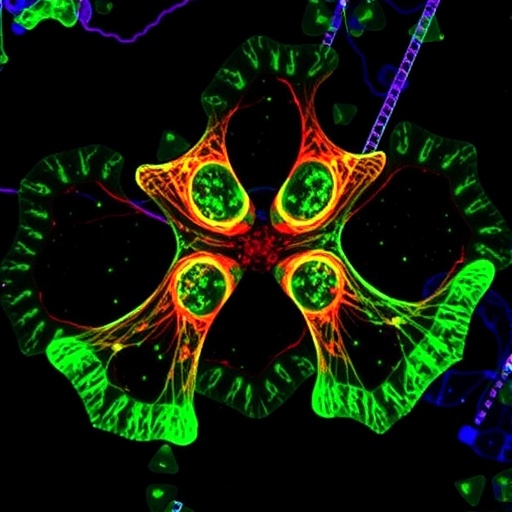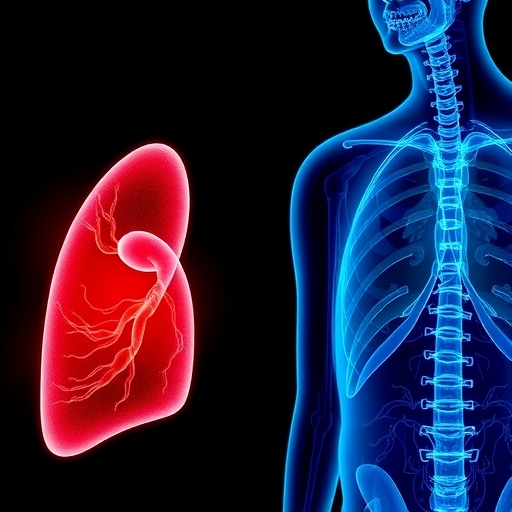In recent years, the landscape of cancer therapy has witnessed a transformative shift towards precision oncology, with an emerging frontier rooted in the electrophysiological properties of tumors. Tumor cells exhibit distinctive bioelectrical characteristics that not only underpin malignant behaviors but also offer novel, targetable vulnerabilities for therapeutic intervention. At the core of these abnormalities lies membrane potential dysregulation, manifested as a persistent depolarization of the transmembrane resting potential (Vm), a phenomenon that fuels tumor proliferation, sustains cancer stem cell (CSC) plasticity, and enables metastatic progression. This electrophysiological hallmark extends intracellularly as well, with CSCs demonstrating mitochondrial membrane hyperpolarization and pronounced pH gradients, factors that reinforce their tumorigenic capacity and resistance to conventional therapies.
Ion channels embedded in tumor cell membranes present a unique “fingerprint” that governs cellular signaling pathways fundamental to malignancy. These tumor-specific ion channel profiles interact intricately with pathways controlling proliferation, differentiation, and migration, markedly influencing disease trajectory and patient outcomes. For instance, the transient receptor potential vanilloid 1 (TRPV1) channel displays a dualistic role across tumor types. In multiple myeloma, TRPV1 inhibition intensifies endoplasmic reticulum stress and mitochondrial calcium overload, thereby synergizing with proteasome inhibitors like bortezomib to surmount drug resistance. Conversely, gastric cancer cells with diminished TRPV1 expression experience reduced calcium/calmodulin-dependent kinase β (CaMKKβ)/AMP-activated protein kinase (AMPK) activity, lifting repression on cyclin D1 and matrix metallopeptidase 2 (MMP2) and promoting invasive phenotypes linked to poor prognosis.
The interplay between ion channels and tumor microenvironmental cues further accentuates tumor aggressiveness and immune evasion. In medulloblastoma, the inward rectifier potassium channel Kir2.1 engages with ADAM10 independent of its ion-conducting role, facilitating Notch2 receptor cleavage and subsequent activation of oncogenic circuits such as the C-Myc/Slug axis. This molecular cascade advances epithelial-to-mesenchymal transition (EMT), invasion, and correlates with diminished 5-year survival rates. Additionally, the tumor milieu’s elevated extracellular potassium concentration acts through Kir2.1 to reprogram tumor-associated macrophages (TAMs), suppressing pro-inflammatory gene expression while heightening immunosuppressive mediator secretion. Glioblastoma exemplifies another dimension, where the EAG2 potassium channel and Kvβ2 subunit complex localizes at the tumor-brain interface, modulating calcium transients that underpin enhanced proliferation, invasive capacity, and resistance to chemotherapeutic agents.
.adsslot_0RvDBSJjeK{ width:728px !important; height:90px !important; }
@media (max-width:1199px) { .adsslot_0RvDBSJjeK{ width:468px !important; height:60px !important; } }
@media (max-width:767px) { .adsslot_0RvDBSJjeK{ width:320px !important; height:50px !important; } }
ADVERTISEMENT
Capitalizing on the crystalline structures and functional dynamics of ion channel complexes, rational drug design has yielded promising therapeutic candidates. The compound K90-114TAT, engineered based on the crystal structure of Kvβ2, disrupts EAG2-Kvβ2 interactions, resulting in significant tumor burden reduction in glioma preclinical models, including those resistant to standard therapy with temozolomide. Further exploitation of tumor bioenergetics and electrophysiology is embodied by compounds such as the K⁺/H⁺ transporter known as Compound 2, which selectively targets mitochondrial pH gradients and hyperpolarization in CSCs. This targeted disruption provokes reactive oxygen species (ROS) surges capable of eradicating ovarian CSCs expressing the CD133 marker, marking a pivotal advance in combating tumor relapse and chemoresistance.
Electrical therapies have surged to the forefront of adjunctive cancer treatment modalities by exploiting intrinsic tumor electrophysiology. Tumor treating fields (TTFields), composed of low-intensity alternating electric fields, perturb mitotic spindle dynamics by interfering with tubulin and septin polymerization, leading to mitotic arrest and tumor cell death. Concurrently, TTFields enhance membrane permeability and transiently disrupt the blood-brain barrier, thereby augmenting the delivery and efficacy of chemotherapeutic agents such as temozolomide. Clinical data underscore that the integration of TTFields with chemotherapy confers extended survival benefits in glioblastoma patients, a notoriously refractory cancer.
Multimodal therapeutic strategies leverage the synergy between electrophysiologically targeted agents and immunomodulatory treatments to surmount barriers imposed by the immunosuppressive tumor microenvironment. For example, Kir2.1 inhibitors paired with programmed death-1 (PD-1) checkpoint inhibitors have demonstrated efficacy in reversing TAM polarization from the tumor-promoting M2 phenotype to a more cytotoxic M1 state. Similarly, irreversible electroporation (IRE) combined with Toll-like receptor 3 and 9 (TLR3/9) agonists and PD-1 blockade potentiates CD8⁺ T cell-mediated cytotoxicity, thereby orchestrating robust antitumor immune responses.
Clinical translation of these electrophysiological therapies has shown marked promise across diverse malignancies. A comprehensive pan-European clinical study examining electrochemotherapy (ECT) for cutaneous cancers reported remarkably high objective response rates, with vascular tumors such as Kaposi’s sarcoma and basal cell carcinoma exhibiting the greatest sensitivity. High-frequency irreversible electroporation (H-FIRE), a refinement of IRE technology, has been effectively applied to localized prostate cancer, achieving precise tumor ablation while sparing surrounding tissues and maintaining genitourinary function, with minimal adverse effects. Nanotechnology-driven delivery systems further augment therapeutic specificity and potency. The M-UCN-T nanoparticle, for instance, releases nitric oxide in response to near-infrared light stimulation and intracellular glutathione, simultaneously activating endoplasmic reticulum-localized TRPV1 channels to trigger calcium-induced immunogenic cell death, demonstrating profound glioma suppression absent systemic toxicity.
Looking forward, the integration of advanced nanocarriers, molecularly tailored ion channel inhibitors, and precision bioelectrical therapies heralds a new era in cancer treatment. Innovations such as the M-UCN-T system, which achieves over 90% tumor suppression in preclinical models, exemplify the potential impact on refractory malignancies. Collectively, these multidisciplinary efforts underscore the importance of tumor electrophysiology not only as a fundamental facet of cancer biology but also as a strategic axis for therapeutic innovation, with prospects for improved survival and quality of life for patients across the oncological spectrum.
Subject of Research: Not applicable
Article Title: Not provided
Web References: http://dx.doi.org/10.1002/imm3.70002
References: Not provided
Image Credits: Kailai Li, Yasi Zhang, Yue Qian, Hu Qin, Hongtian Zhang, Chaoqun Li, Changmin Peng, Jian Zhang, Suyin Feng
Keywords: Cancer
Tags: bioelectrical characteristics of tumorscancer stem cell plasticityelectrophysiological properties and cancer treatmention channels in tumor cellsmembrane potential dysregulation in cancermetastatic progression in tumorsovercoming drug resistance in cancer therapyprecision cancer therapytherapeutic interventions for malignant tumorsTRPV1 channel in cancer therapytumor electrophysiology insightstumor-specific ion channel profiles





